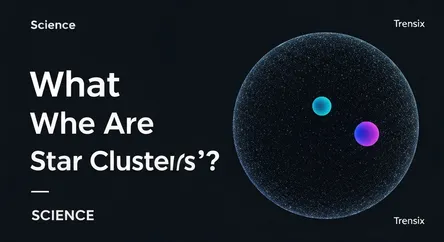Science
What Are Star Clusters?

Explore star clusters, vast groups of stars bound by gravity. Learn about the two main types and their importance in understanding the universe.
What is it?
A star cluster is a large group of stars, gravitationally bound together. They originate from the same giant molecular cloud and are roughly the same age. There are two primary types: open clusters and globular clusters. Open clusters, like the Pleiades, are younger, loosely packed groups containing a few thousand stars, typically found in the spiral arms of a galaxy. Globular clusters, such as Omega Centauri, are much older, tightly bound, spherical collections of hundreds of thousands to millions of stars that orbit in the halo of a galaxy. These dense, ancient systems are among the oldest objects in the universe.
Why is it trending?
Star clusters are consistently in the astronomical spotlight thanks to advanced telescopes like the James Webb Space Telescope (JWST) and the Hubble Space Telescope. These instruments provide breathtaking, high-resolution images and data, allowing scientists to study individual stars within distant clusters. Recent observations are revealing new insights into the early stages of star formation, the chemical composition of ancient stars, and the dynamics of galactic evolution. New discoveries about black holes residing in cluster cores also generate significant scientific and public interest.
How does it affect people?
Studying star clusters is fundamental to our understanding of the cosmos. Because all stars in a cluster have a similar age and origin, they serve as perfect laboratories for testing theories of stellar evolution. By observing how stars of different masses evolve within a cluster, astronomers can refine models that predict the lifecycle of stars, including our own Sun. This knowledge helps us piece together the history of our Milky Way galaxy, determine the age of the universe, and deepen our understanding of our place within it, inspiring wonder and driving technological innovation.